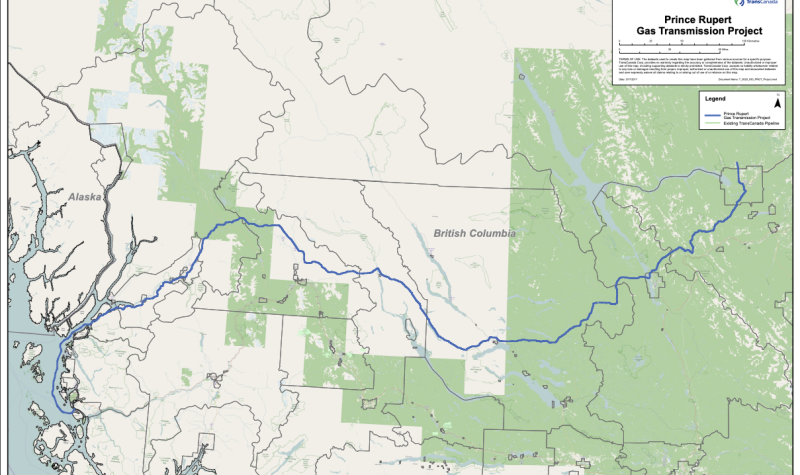In northern BC, an Enbridge pipeline project has been resurrected by Alberta natural gas pipelines, liquids pipelines and energy company TC Energy. Purchased in 2022, the "Westcoast connector" (as it was called when owned by Enbridge) was renamed the Prince Rupert Gas Transmission (PRGT) by TC Energy.
This pipeline is slated to be 900 kilometres long, dissecting a number of First Nations territories. Beginning in the Nisga'a Nation (co-operators of the pipeline along with LNG Rockies and Western LNG), running north-east through Lax Kw'alaams territory, Wet'suwet'en, and Gitanyow territory, the pipeline company TC Energy states that they "signed agreements with all 20 elected Indigenous first nations along the pipeline route in 2018", omitting the nations which are hereditary-led.
Naxginkw (Tara Marsden), is a member of the Gitanyow Huwilp and Wilp Sustainability Director for the Gitanyow Hereditary Chiefs. The GHC sent a letter to Ksi Lisims LNG regarding their concerns over the new pipeline path. Their letter stated "The proposed PRGT pipeline has the potential to cross more than 50 kilometres of the Gitanyow Lax’yip, including four Wilp territories. While Gitanyow reviewed the PRGT project in 2014, at that time the pipeline was intended to connect to a different LNG terminal on Lelu Island."
Tara Marsden spoke to CICK News about the key components of the letter and the Gitanyow Hereditary Chiefs' concerns with the Ksi Lisims project.
Listen to the interview below:


